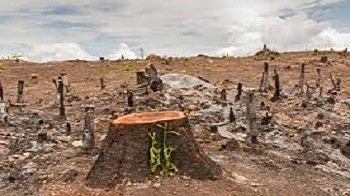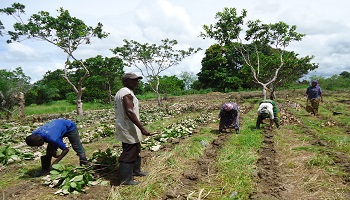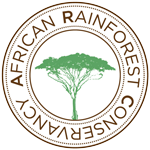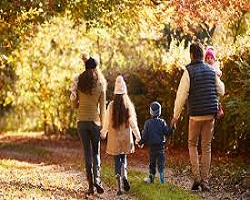Offset your carbon footprint at $10/ton
 In 2018, the world emitted 37 billion tons of CO2. To keep warming below 1.5 degrees C, a level that will lead to catastrophic destruction in the global ecosystem, emissions need to drop 45% by 2030.
In 2018, the world emitted 37 billion tons of CO2. To keep warming below 1.5 degrees C, a level that will lead to catastrophic destruction in the global ecosystem, emissions need to drop 45% by 2030. You have a carbon footprint, the CO2 that is generated across your lifestyle—by your car, your electricity, the making and transporting of the products you buy; every time you fly on an airplane your footprint leaps, as much as a ton when you fly intercontinentally.
You have a carbon footprint, the CO2 that is generated across your lifestyle—by your car, your electricity, the making and transporting of the products you buy; every time you fly on an airplane your footprint leaps, as much as a ton when you fly intercontinentally.
Per capita CO2 emissions are 17 tons/year in the USA.
 The destruction of tropical forest for timber and agriculture generates about 10% of global emissions. A REDD (reduced emissions from deforestation and degradation) Credit is created by preventing the destruction of a specific forest, CO2 that is saved each year by not cutting that forest. With the credit the forest generates cash for its global ecosystem services, which goes to the local communities to protect the forest.
The destruction of tropical forest for timber and agriculture generates about 10% of global emissions. A REDD (reduced emissions from deforestation and degradation) Credit is created by preventing the destruction of a specific forest, CO2 that is saved each year by not cutting that forest. With the credit the forest generates cash for its global ecosystem services, which goes to the local communities to protect the forest.Tanzania REDD+ Project
The MJUMITA Community Forest Project protects 41,924 ha of East African Coastal Forest in Southeast Tanzania. The forests provide habitat for many threatened animal and plant species including the Rondo dwarf galago, African elephant, leopard and plain-backed sunbird. The project is implemented by 10 rural communities who have elected to protect the forest on their traditional village land rather than clearing it for agriculture. Each community has established a village forest reserve to protect their forest and its biodiversity. All residents of the village are ‘shareholders’ in the project with an equal right to dividends generated from the sale of Stand For Trees credits. When you buy credits from the MJUMITA project your purchase provides direct benefits to every woman, man and child in the 10 communities as well as paying for the costs of managing the forests and their unique biodiversity.
Key Facts:
- The community-led project empowers communities to halt deforestation and assert control over their land and forests.
- The carbon credits generated by the project are owned by the communities who have decision-making power over the use of revenues from sales.
- The project protects threatened East African coastal forests. These ancient forests are home to many threatened species including the Rondo Dwarf Galago, the African Elephant, leopard and 16 plant species classified as threatened by IUCN.
PROJECT IMPACTS
COMMUNITY DEVELOPMENT
The project has helped communities establish  land- use plans, village forest reserves and systems for managing revenue from sustainable forest use and carbon credits. Most communities chose to spend a proportion of their carbon credit earnings on community level development projects, including investments in schools, health clinics, and water sources.Communities spend earnings on building additional primary school classrooms, school desks, and books. Additionally, most households spend a majority of the revenue generated from Stand For Trees credits on food, school uniforms, and secondary school fees for their children. Conserving forests also helps communities protect water sources, and several participating villages have used a portion their earnings to improve access to clean water for communities.
land- use plans, village forest reserves and systems for managing revenue from sustainable forest use and carbon credits. Most communities chose to spend a proportion of their carbon credit earnings on community level development projects, including investments in schools, health clinics, and water sources.Communities spend earnings on building additional primary school classrooms, school desks, and books. Additionally, most households spend a majority of the revenue generated from Stand For Trees credits on food, school uniforms, and secondary school fees for their children. Conserving forests also helps communities protect water sources, and several participating villages have used a portion their earnings to improve access to clean water for communities.
ECONOMIC DEVELOPMENT
Lindi is one of the poorest and most under  developed regions in Tanzania, but forest conservation is helping to change that. Project villages receive at least 60% of the sales price of carbon credits as cash. The remaining 40% covers the cost of verification under VCS and CCB standards, agricultural extension services, sales and marketing. Most of the participating villages pay cash payments to everyone in the village (mothers collect payments for their children), which allows community members to spend their income as best suits their needs. So far, about 40% of households have spent income investing in new businesses or improving their farm productivity. The project is also improving the local economy by providing agriculture extension services that help farmers improve farm productivity.
developed regions in Tanzania, but forest conservation is helping to change that. Project villages receive at least 60% of the sales price of carbon credits as cash. The remaining 40% covers the cost of verification under VCS and CCB standards, agricultural extension services, sales and marketing. Most of the participating villages pay cash payments to everyone in the village (mothers collect payments for their children), which allows community members to spend their income as best suits their needs. So far, about 40% of households have spent income investing in new businesses or improving their farm productivity. The project is also improving the local economy by providing agriculture extension services that help farmers improve farm productivity.
EMISSIONS REDUCTIONS AND CERTIFICATIONS
The MJUMITA Community Forest Project (Lindi) has been validated and verified under the Verified Carbon Standard. Additionally, due to the project’s exceptional benefits in terms of climate adaptation, community development and biodiversity conservation, the project has obtained triple gold level status under the 3rd edition of the Community Biodiversity and Climate Standards (CCB).





